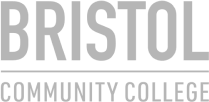Implicit bias refers to unconscious attitudes or beliefs that can affect our thoughts, feelings, and behaviors towards others. Implicit bias can be formed through our experiences and interactions with the world, and it can be difficult to identify and change.
Implicit Bias Training Module
Select a practice tier below to begin facilitator-led training.
PERSONAL REFLECTION45 Minutes
- Review definition of implicit bias followed by guided personal reflection exercise where staff explore own biases and potential unintentional implicit bias
- Small group discussions to share insights and experiences and develop a deeper understanding of the impact of implicit bias on individuals
CONVERSATIONS1 Hour
- Role-playing scenario
- Staff engage in simulated conversations that involve implicit bias to practice recognizing and responding appropriately to such situations
- Facilitated discussions on how to address implicit bias effectively while maintaining a positive and supportive learning environment
ACTIVITIES30 Minutes
- Collaborative activity
- Staff work in small groups to *brainstorm and propose strategies for increasing representation and equity for disproportionately racially impacted individuals or groups in admissions, faculty hiring, promotion, and resource allocation.
- Sharing and discussion of the proposed strategies, encouraging creativity and critical thinking
- Sharing best practices: staff share successful strategies they have implemented to promote representation and equity in their own professional work.
ACTION PLAN30 Minutes
- Develop personal action plans outlining how to apply learning from the training module to roles and responsibilities within the institution
- Review suggestions for ongoing self-reflection and continued learning as found in the Resource section
- Build in appreciation and acknowledgments for participants’ commitment to fostering a more inclusive and equitable campus environment
FOLLOW UP
- Offering ongoing workshops or seminars to delve deeper into related topics
- Creating a platform for staff to share success stories and challenges faced in implementing strategies for increasing representation and equity
Implicit Bias Resources
Personal Reflection45 Minutes
- Review definition of implicit bias followed by guided personal reflection exercise where staff explore own implicit/unconscious bias and potential unintentional implicit bias
- Encourage participants to consider how own biases and assumptions may contribute to implicit bias
CONVERSATIONS1 Hour
- Instructional staff engage in simulated conversations on effective strategies for responding to implicit bias and fostering a supportive and inclusive learning environment.
- Participants engage in facilitated discussions about the impact of implicit bias on students of color, and how to address them.
ACTIVITIES30 Minutes
- Similar activities as included for Staff, plus:
- Identifying implicit bias: Participants given/search for a list of implicit bias instances and asked to identify which ones they have experienced or witnessed
- Challenging implicit bias: Participants given/search for a scenario involving implicit bias and asked how they would respond
- Analyzing media content: Participants given a piece of media content, such as a news article or a TV show, and asked to identify examples of implicit bias
- Sharing best practices: Instructional staff share successful strategies they have implemented to promote representation and equity in their own teaching and work
ACTION PLAN30 Minutes
- Develop personal action plans outlining how to apply learning from the training module to roles and responsibilities within the institution
- Review suggestions for ongoing self-reflection and continued learning as found in the Resource section
- Build in appreciation and acknowledgments for participants’ commitment to fostering a more inclusive and equitable campus environment
FOLLOW UP
- Offering ongoing workshops or seminars to delve deeper into related topics
- Creating a platform for staff to share success stories and challenges faced in implementing strategies for increasing representation and equity
Implicit Bias Resources
PERSONAL REFLECTION45 Minutes
- Review definition of implicit bias followed by guided personal reflection exercise where staff explore own implicit/unconscious bias and potential unintentional implicit bias
- Participants asked to reflect on their own management/leadership style, and how they can be more inclusive and supportive of students and staff of color
CONVERSATIONS1 Hour
- Managers/Leaders engage in facilitated discussions about implicit bias.
- Discuss the impact of implicit bias on students of color, and how to address them
- Discuss role of management and leadership in creating a more inclusive and supportive learning environment
ACTIVITIES30 Minutes
- Similar activities as included for Staff and Instructional Staff, plus:
- Developing an Action Plan: Participants develop a plan for how they can be more inclusive and supportive of students of color in their own management/leadership role
ACTION PLAN30 Minutes
- Develop personal action plans outlining how to apply learning from the training module to roles and responsibilities within the institution
- Review suggestions for ongoing self-reflection and continued learning as found in the Resource section
- Build in appreciation and acknowledgments for participants’ commitment to fostering a more inclusive and equitable campus environment
FOLLOW UP
- Offering ongoing workshops or seminars to delve deeper into related topics
- Creating a platform for staff to share success stories and challenges faced in implementing strategies for increasing representation and equity
Implicit Bias Resources





